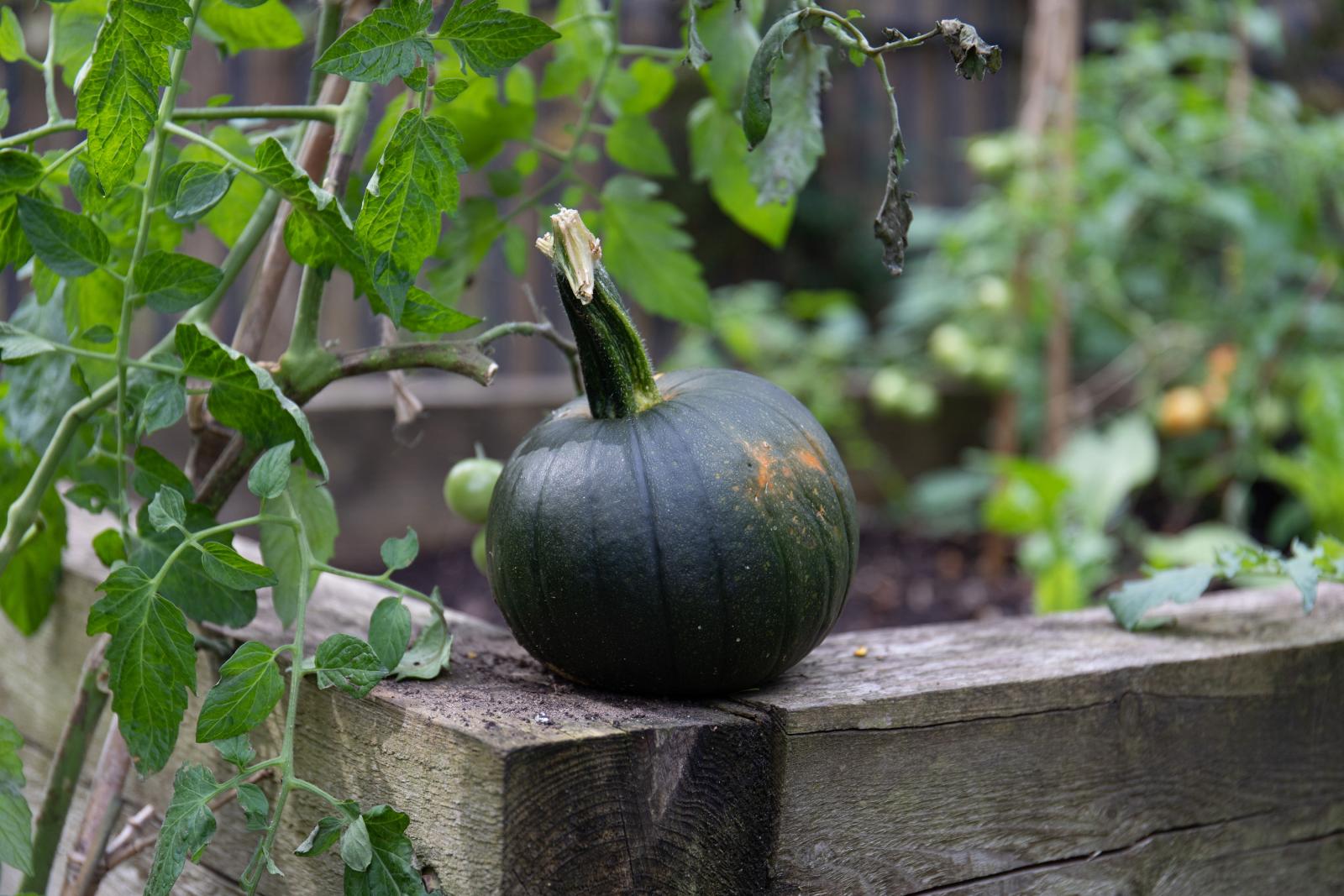Sustain • London Food Link • Articles
Growers Corner: September
As the season turns Elena Trivelli is in growers corner, with harvesting advice, and some thoughts on our winter crops.

The leaves are slowly changing colour and starting to light up gardens and streets with vibrant shades of oranges, yellows and browns. The temperature is falling, the breeze is colder, and crispy sunny days alternate with days of rain… it must be September!
Harvesting
In a vegetable garden this is a busy month for harvesting. Crops such as potatoes, courgettes and marrows, squashes, peas and beans, beetroots, carrots, sweetcorn, apples, autumn raspberries and many more!
To help tomatoes ripen for harvest, you can halve the leaves on the plant, leaving the ones at the top. Also, try putting some terracotta slabs under your squashes, it will prevent them rotting on the ground and captures more heat to help speed up ripening.
Saving seeds
If you are not growing F1 crops, you can also save seeds from some of your plants. The easiest ones are beans and peas: just leave some pods on the plant, collect them when they are dry and crinkly, and voila – you have seeds for next spring! Tomato seeds are also easy to save: choose your healthiest tomatoes, leave them on the plant until very ripe, then cut them and scoop out the seeds into a jar of water. After a few days, when a mould develops, sieve the seeds and wash them thoroughly to remove the mould. Place them on a piece of kitchen roll to fully dry, and then store in a paper envelope with a label for next year.
Sowing and planting
This is the time to sow your autumn and winter crops, such as chicory, endive, many salad leaves and oriental leaves, broccoli, cabbage, fennel, broad beans and garlic bulbs. You can also start to plant out the winter seedlings you have – make sure they have at least 5-6 true leaves, though: the bigger they are, the more they will cope with slug attacks and temperature drops. Depending on your location, some seedlings might need protection with fleece and cloches. Also, have protections at hand in case of an early frost.
Caring for your soil
Your compost bins will have produced some precious organic matter over the summer. It is now the time to mulch over your beds with some compost and start a new compost heap. Remember that soil should not be left bare for long periods of time, so if you’re not growing crops on a bed over winter, this is the time to sow some green manures, such as phacelia or crimson clover. They will protect your soil from erosion and compaction, lift nutrients towards the surface, and will provide important biomass when you dig them into the soil in early spring.
Want to learn more? Check out Capital Growth's training programme for some fantastic online and in-person workshops to help you up your growing game.
Published Thursday 17 September 2020
London Food Link: London Food Link brings together community food enterprises and projects that are working to make good food accessible to everyone in London to help create a healthy, sustainable and ethical food system for all.